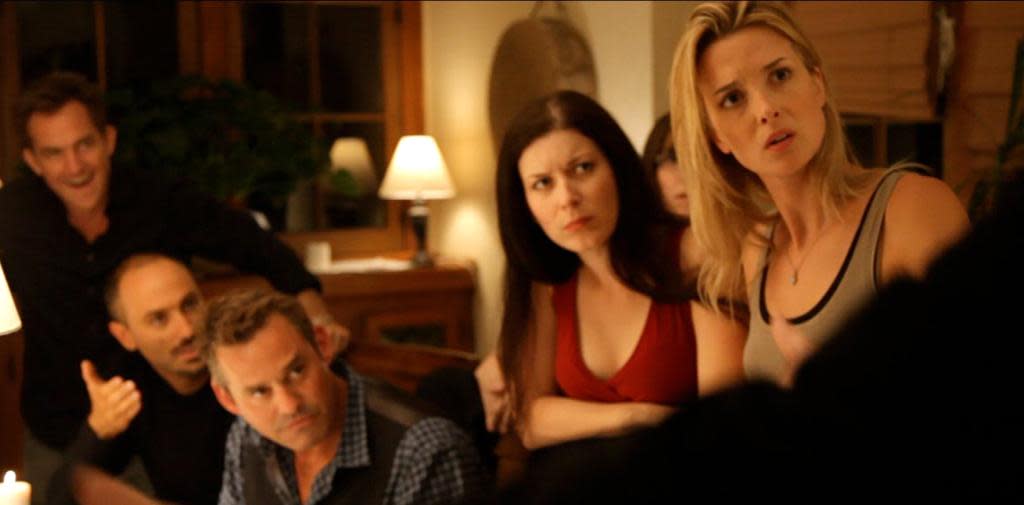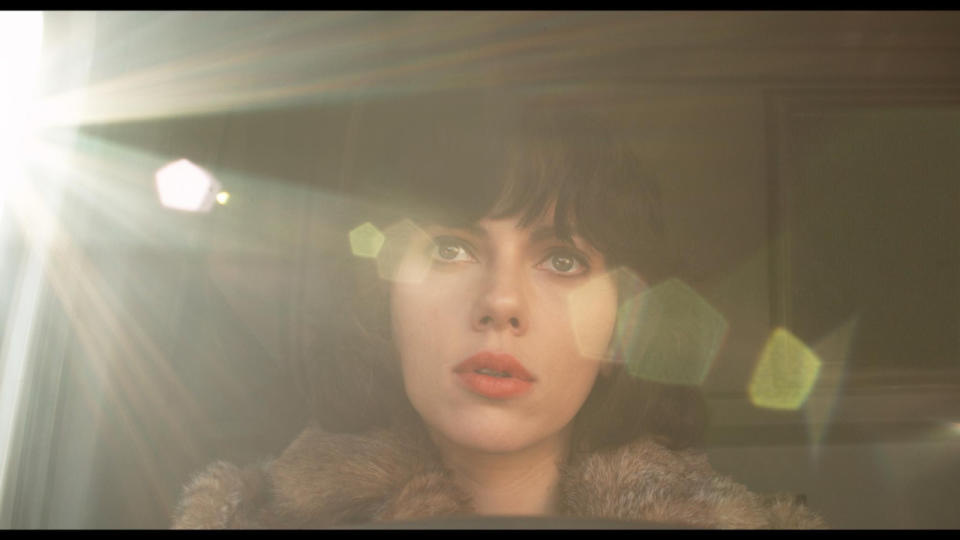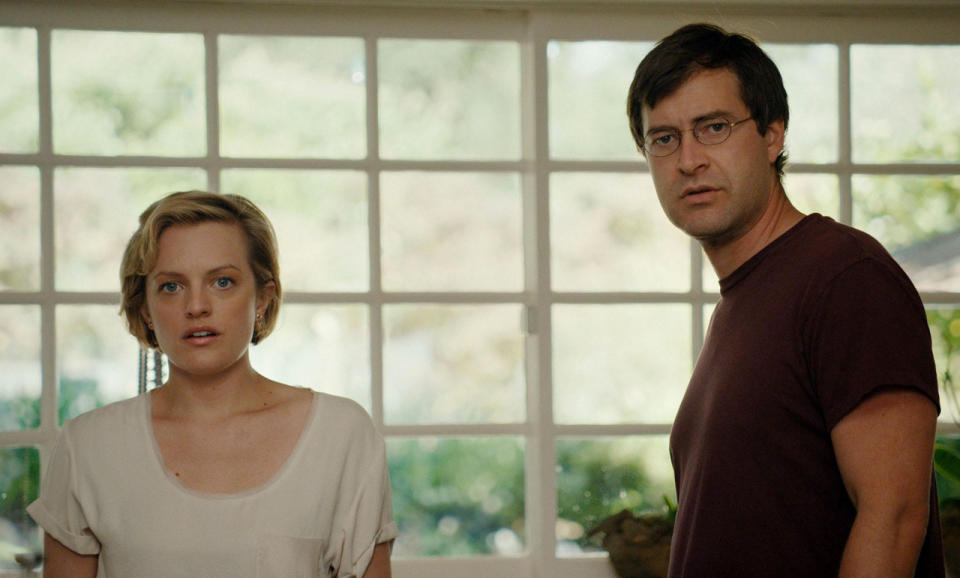2014 in Review: The Rise of Low Budget Science Fiction

The mind-bending dinner party in Coherence
My favorite science fiction film of 2014 was made for the cost of a used Prius. That’s director James Ward Byrkit’s joking description of his budget for Coherence, a thriller about parallel universes that raised just as many goose bumps and big existential questions as Christopher Nolan’s Interstellar (which was 80 minutes longer and cost around $165 million).
I liked Nolan’s space epic just fine, but for me, Coherence — which was shot in just five nights and contains no showy digital effects — is the more groundbreaking of the two films. It represents a movement that’s been gaining speed over the past few years, as independent directors push the science-fiction genre outside of its former big-budget comfort zone. The result is the emergence of what the Washington Post has called “low-fi sci-fi;” we’ll call it low-sci for short. To borrow a term from a different medium, these films are like the TARDIS: They no longer seem small once you step inside.
Low-sci films take big science-fiction concepts and use them to tell relatable human stories, often on a shoestring budget. Writer-director Shane Carruth’s 2004 Sundance hit, Primer, the mother of modern low-sci films, cost only $7,000, and in the ten years since its release, the budgets for these films have gone up a bit (this year’s Under the Skin cost $13 million), but the principles have remained the same. Rather than following the Star Wars model of developing a sprawling universe, these movies adhere to the Twilight Zone school of science-fiction, imagining small shifts in technology and the universe that have enormous consequences for characters. They may contain sporadic special effects, but these are secondary to ideas.
Watch a scene from Coherence:
Take Coherence, a fiendishly clever psychological thriller about a group of longtime friends and the baggage they carry. We meet the cast at a dinner party, where they all seem relatively happy and festive. Then a comet passes overhead, the power and Internet go down, and the mood shifts. There are factors at work that bring this story fully into the realm of science-fiction: Without giving away too much, the characters find that the universe has splintered into parallel timelines, and as the gears of the plot turn, the implications get more horrifying. But instead of putting the characters at the mercy of the supernatural, the sci-fi plot elements illuminate the characters’ regrets about the choices they’ve made in their lives — a subtext that appeared throughout those initial dinner party scenes.

Scarlett Johansson in Under the Skin
Under the Skin, another one of this year’s best films, takes an equally nuanced but very different approach. Scarlett Johansson spends most of the film driving around Scotland, offering rides to strange men; not much is revealed about her character except that she’s an alien who engages her prey in conversation before taking them back to her home, where they’re devoured in an inky sea of goo. The sci-fi elements transform the film into a chilling, enigmatic twist on the usual serial-killer story.
Another 2014 low-sci film, The One I Love, embraces the emerging genre of sci-fi romantic comedy. A young couple (played by Elisabeth Moss and Mark Duplass) goes to an isolated California vacation retreat at the advice of their marriage counselor, where they discover that alternate versions of themselves already occupy the house. To complicate matters, each of the doppelgangers is more like the person their real-life spouse wishes they could be. Combining science fiction with low-key romantic comedy is an idea filmmakers are only just beginning to explore, but it has produced some wonderful results: On the more mainstream end of indie, we have Eternal Sunshine of the Spotless Mind and Her; on the microbudget side, there are films like the 2009 comedy TiMER (about a device that counts down the minutes until people meet their soulmates) and the heartfelt time-travel film Safety Not Guaranteed.

Elisabeth Moss and Mark Duplass in The One I Love
These movies are expanding our ideas of what science fiction can be, but in a sense they’re also a return to the genre’s roots. Sci-fi movies started out cheap, from the serials of the 1930s to the B-movies of the 1950s. The tide started to change in the 1960s with more epic (and more expensive) films like 2001: A Space Odyssey and Planet of the Apes, but even through the 1970s, one could watch smart low-budget sci-fi movies like Dark Star and THX-1138. It was the Star Wars trilogy that brought science fiction into the action-blockbuster mainstream. Soon, the genre became increasingly defined by big movies that looked like comic books brought to life: The Alien and Star Trek franchises, Blade Runner, Tron, the Matrix trilogy, among others.
In the age of the superhero films, though, the scale of modern sci-fi film has only increased: Just look at the list of the most expensive films ever made — a virtual wrestling match between science-fiction and fantasy movies from the past 10 years. Yet even as big-budget sci-fi began its box office domination, independent filmmakers began planting the seeds of low-sci, with films like Cube (1997) and Donnie Darko (2001). It was time for a return to sci-fi that didn’t require hundreds of millions of dollars.
And now that low-sci has a firm foothold in the indie film world, its influence is creeping into mainstream film and television, where the definition of science fiction has become more permeable. The chilling British anthology series Black Mirror, which is finally available on Netflix, is low-sci. While 2015 has no shortage of big-budget cinematic spectacles (Star Wars: The Force Awakens, Tomorrowland, Jurassic World, and Avengers: Age of Ultron), they’ll be accompanied by low-sci offerings as varied as Alex Garland’s robot love-triangle drama Ex Machina; the postapocalyptic horror film Air; the space-simulation-gone-wrong thriller 400 Days; the sci-fi noir film Predestination; and the life-of-the-1-percenters dystopian satire High Rise.
At the same time, directors who broke out with low-sci films are increasingly sought for Hollywood studio films. Rian Johnson (director of 2012’s Looper) and Gareth Edwards (director of 2010’s low-sci Monsters, as well as this year’s Godzilla) are both attached to upcoming installments of the Star Wars franchise. Safety Not Guaranteed director Colin Trevorrow is helming Jurassic World. Duncan Jones (Moon) is directing the Warcraft movie. Hopefully, the ingenuity these directors brought to low-budget sci-fi will serve them well in a larger arena.
Still, the best thing about the emergence of low-sci is its accessibility. Audiences who don’t readily identify as science fiction fans can embrace these films, while filmmakers who don’t have a J.J. Abrams budget can create them. The new democracy of science fiction is embodied by a movie I recently watched called Senn, which the filmmakers are distributing themselves for $9.99 via Reelhouse. Set in an oppressive future society where one factory worker is having strange visions, the film is rough around the edges, but it’s also visually magnificent — a testament to what can be accomplished by a talented graphic designer with very little money (director Josh Feldman describes the movie as “nano-budget”) and a strong story. Thanks to the accessibility of technology it’s easier than ever for indie directors to make a science fiction film look like a million bucks. But the beauty of low-sci is that it doesn’t have to cost that much.
Image credits: Oscilloscope Pictures, A24, Radius-TWC

